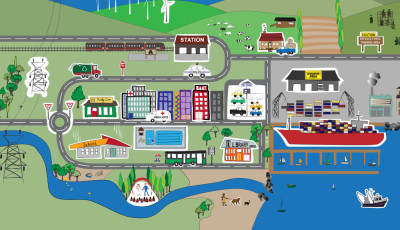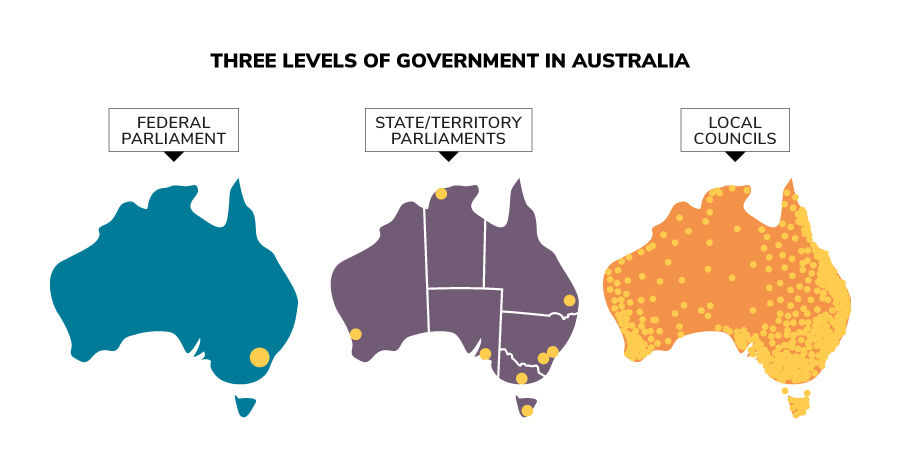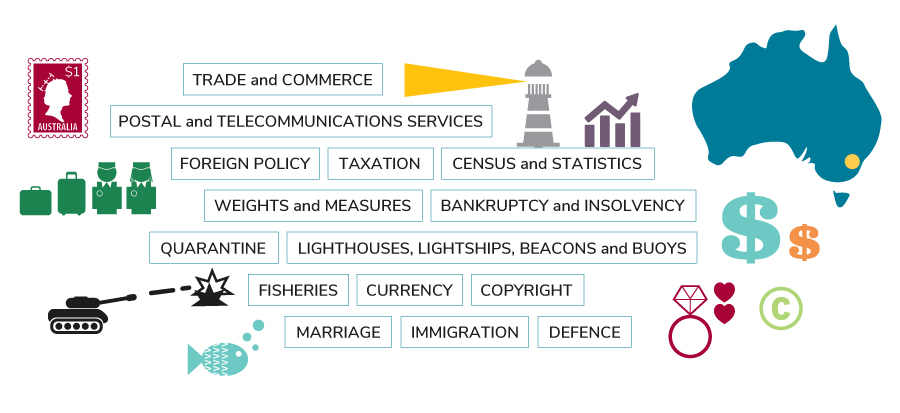
Federal, state and local
Do you know what each level of government is responsible for? Test your knowledge of the three levels of government in Australia with this game.
Begin your exploration of the three levels of government in Australia with this short introduction. Discover the responsibilities of the federal Parliament, state and territory parliaments and local government, and how they work together.
Australia has three levels of government that work together to provide us with the services we need.
The three levels of government are:

Parliamentary Education Office (peo.gov.au)
The three levels of government – the law-making bodies in Australia. The Federal Parliament is located in Canberra, the nation's capital. State/territory parliaments are located in the capital cities of each of the 6 states and 2 territories. Local councils are located around Australia in each local council division.
This work is licensed under a Creative Commons Attribution-NonCommercial-NoDerivs 3.0 Unported License.
You are free to share – to copy, distribute and transmit the work.
Attribution – you must attribute the work in the manner specified by the author or licensor (but not in any way that suggests that they endorse you or your use of the work).
Non-commercial – you may not use this work for commercial purposes.
No derivative works – you may not alter, transform, or build upon this work.
Waiver – any of the above conditions can be waived if you get permission from the copyright holder.
Each level of government has the power to make laws about different things. Sometimes these powers are shared.
FEDERAL PARLIAMENT |
STATE AND TERRITORY PARLIAMENTS |
LOCAL COUNCILS |
|
Responsible for issues that affect all Australians (national issues) |
Responsible for issues that affect people in that state or territory |
Responsible for issues that affect local communities |
|
Post, telephones and the internet Immigration Defence |
Police Public transport Hospitals |
Rubbish collection and recycling Parks, sports fields and swimming pools Pet control |
Parliamentary Education Office (peo.gov.au) The law-making powers of the federal Parliament include: This work is licensed under a Creative Commons Attribution-NonCommercial-NoDerivs 3.0 Unported License. You are free to share – to copy, distribute and transmit the work. Attribution – you must attribute the work in the manner specified by the author or licensor (but not in any way that suggests that they endorse you or your use of the work). Non-commercial – you may not use this work for commercial purposes. No derivative works – you may not alter, transform, or build upon this work. Waiver – any of the above conditions can be waived if you get permission from the copyright holder.The law-making powers of the federal Parliament

Description
Copyright information
Did you know?
In the Australian Capital Territory (ACT) there are only 2 levels of government! The ACT Government has the roles and responsibilities of both a state government and a local government. This means the ACT Government runs hospitals, schools and prisons, as well as controlling parking, collecting rubbish and running libraries.